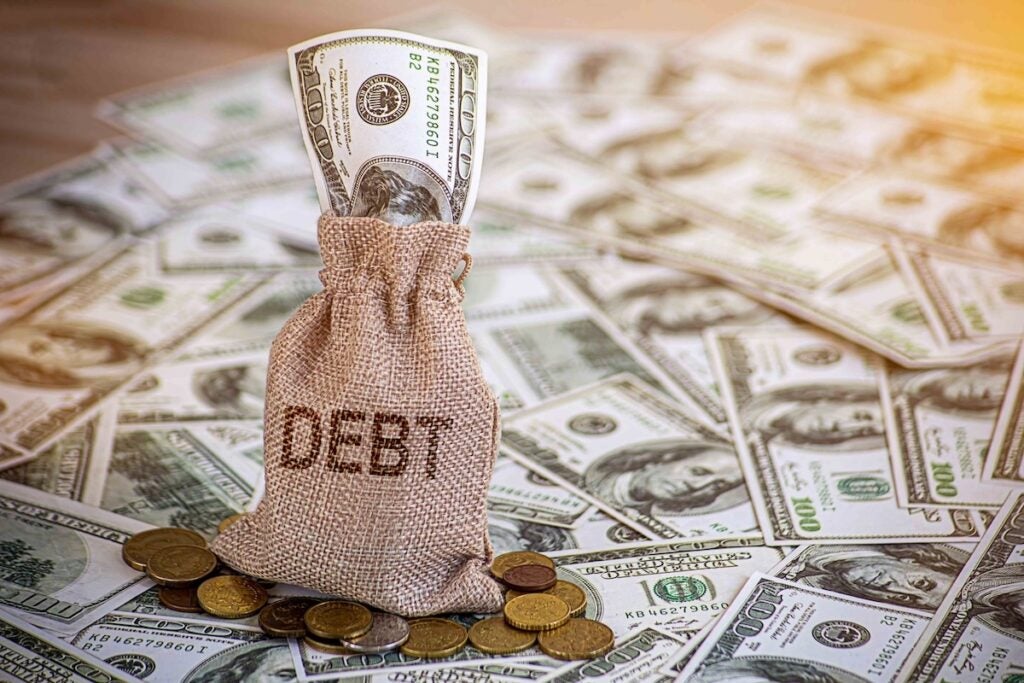Americans have been using their credit cards more than ever this summer. Revolving credit went up by 9.7% in July compared with a year earlier, according to the Federal Reserve. After months of moderating borrowing for most of 2025, the sudden spike shows that many people are increasingly depending on debt to help cover everyday costs.
Revolving vs. Non-Revolving Debt
The Fed breaks consumer credit into two main categories: revolving credit, such as credit cards, and non-revolving credit like auto loans, student loans and personal loans. July’s surge was driven largely by revolving balances, which climbed at an annual rate of 9.7%. Non-revolving debt also rose 1.8%. Overall, consumer debt jumped by $16 billion, a 3.8% annual gain.
Don’t Miss:
What’s Driving the Spike
There could be several reasons why debt jumped so much in July. Though prices aren’t rising as fast as they were during the inflation surge in 2022, groceries, rent and gas are still taking a big bite out of paychecks. The U.S. Department of Agriculture projected that in 2026, prices for all food are predicted to increase 2.2% and food-at-home prices are predicted to increase 1.2%. To keep up with the rising costs of living, it makes sense that more people are using credit cards to cover their daily expenses.
The interest rate is another factor worth noting. The current interest rate on credit card plans is around 21%, according to the Federal Reserve Bank of St. Louis, the highest it’s been in decades, which makes borrowing more expensive. So, anyone carrying a balance is likely paying far more in interest than they did just a few years ago.
Put these two together, and it’s easy to see why consumer debt is spiking.
Trending: 7 Million Gamers Already Trust Gameflip With Their Digital Assets — Now You Can Own a Stake in the Platform
What to Do If You’re In Credit Card Debt?
Average credit card APRs are hovering near record highs of over 20%, which means if you have a $5,000 balance — and you’re barely keeping up with minimum payments — you can quickly rack up hundreds of dollars in interest in just a few months. Here’s what you could do to avoid falling deeper into the debt trap:
- Pay more than the minimum: Making only minimum payments on your credit card will extend the time it takes you to pay off debt and also increase the amount of interest you owe. So try to pay more than the minimum.
- Target one card at a time: If you have multiple credit cards, use either the debt avalanche or debt snowball method to speed up your debt repayment. With the avalanche method, you’d pay off the card with the highest interest rate first to minimize total interest. With the snowball method, you’ll pay off the smallest balance first.
- Get a balance transfer card: A balance transfer card is a 0% intro APR card that could typically give you 12 to 18 months to pay down debt without interest. Just make sure you can pay it off during the promo period and watch out for balance transfer fees.
- Negotiate with your card issuer: If you haven’t already, call your issuer and ask if they have a hardship program for those who are struggling to repay their debt. If you have a good payment history, some companies will reduce your rate or offer a temporary relief plan.
Read Next:
Image: Shutterstock
Market News and Data brought to you by Benzinga APIs
© 2025 Benzinga.com. Benzinga does not provide investment advice. All rights reserved.


